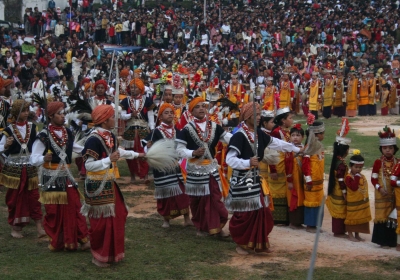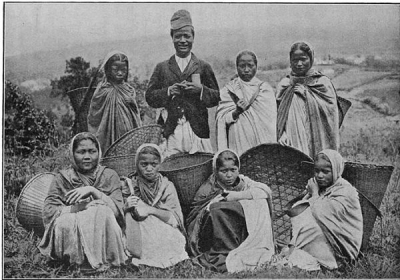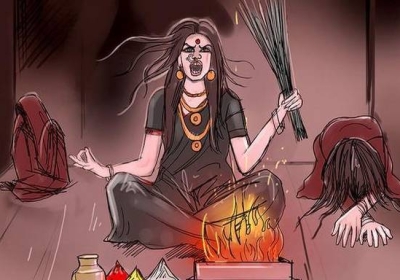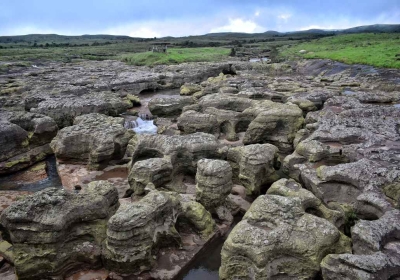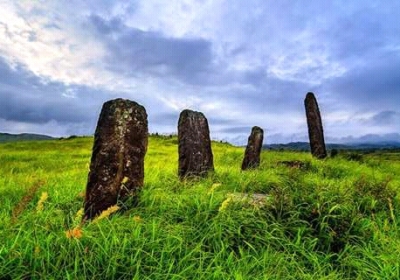Khasi Heritage: The Cradle of Khasi Culture
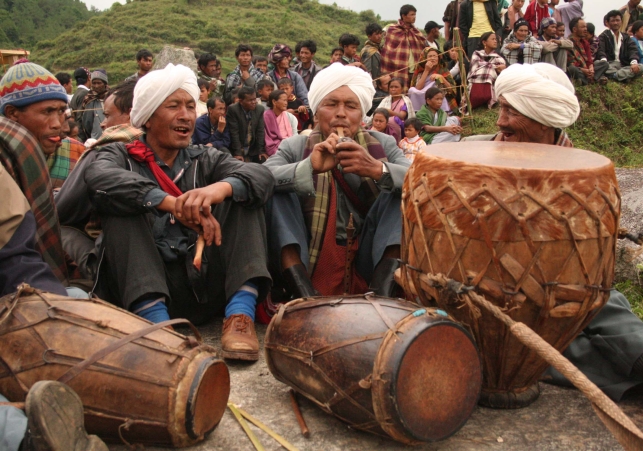
The entire nature embodies a soul bestowed upon by the sources of energy from the five elements: the sun, moon, air, water and fire and every component of nature is preserved by thunder and earthquakes. Certain rivers and mountains, forests and huge rocky boulders, caves and caverns and various natural features are possessed or inhabited by certain spirits of various dimensions. Further, depending upon the desire of human society, deities could be harboured for the welfare of an individual, a family and the community. Among the major landmarks dedicated to the reverence of a specific deity are Sohpetbneng peak, with its forest is the habitat of a Sylvan deity for the genesis of mankind; Diengiei peak and the surrounding forest is the habitat of a Sylvan deity for the preservation of the environment; Shyllong peak, along with its surrounding grove, is the habitat of a Sylvan deity for state formation, and Ka-Meikha peak, along with the surrounding forest, is the habitat of a Sylvan deity for fecundity. The Kupli river, Kynshi river, Umngot river, Umtrew river and several other rivers are habitats of spirits that could be major deities or ‘ki blei ki dken’ and minor spirits of both good and bad omen. During the golden era, almost all the spirits were bountiful deities that prevailed all over the earth and the mischievous spirits were condemned to the subterranean.
Mawlongsyiem at Sohra is the major deity of Mawsmai territory and is the father of Ka Ngaid, Ka Shwar and Ka Taro. Ka Ngaid is the mother of U Thlen who married the toad ‘Ka Hynroh’. Ka Hynroh gave birth to another species of creature, whom her husband, U Thlen, devoured without intention. When Thlen came to know that he had savoured his own child, he was furious with Hynroh and in remorse committed that he would live by human blood and earn abundant wealth. That is his spiteful pledge before the divine council, where he was condemned to the subterranean. The spiteful weapons belonging to Ka Shwar and Ka Taro are Ka Lasam and Ka Bih, which are prevalent in Khasi society. Both are virulent substances that the keeper of these spirits will infect upon their victims. Ka Lasam affects the interior portion of the mouth, particularly the bleeding of the gums, and Ka Bih affects the outer portion of the mouth, generally the swelling of the lips. A proper definition of these aspects will be elaborated in the subsequent chapters.
Thlen, the mammon-serpent was dormant for several eons during the golden age or ‘Aïom Ksiar’ was flourishing on earth, although he occasionally peeps through the cavern with a desire to interact with other creatures. However, he was scared with profound reverence towards Ka Meihukum and U Thawkur, the omniscient and omnipotent divine entity. When mankind had an independent existence on earth, certain sections of the human race neglected the duty of paying obeisance to the divine. It created a situation that was conducive for the mammon-serpent to indulge in temptation with any vulnerable beings. It is an opportunity for the mammon-serpent to venture onto the surface of the earth or ‘Ryngkew’. Human beings are considered as the seven clusters of inhabitants on earth, which correlate with the seven continents of the world in the contemporary interpretation. The Khasi worldview considered the entire human race as a single entity of humanity, which descended from heaven at the summit of Sohpetbneng, or Heavenly Umbilical peak. The anthropological excavation of Dr Marco Mitri substantiated the myth with the discovery of ancient settlements at Lawnongthroh and other precincts of Sohpetbneng peak in Ri-Bhoi district of Meghalaya.
Among the seven divine families, the leader of the delegations is the democratic imperial deity, U Syiem Lakriah and the transitory settlement is set up on earth under the charge of the domestic imperial deity, Ka Lukhimai. Ka Lukhimai takes care of all domestic affairs and Syiem Lakriah supervises everything outside the domestic sphere, along with his sons, Sormoh and Sorphin. At the completion of every divine duties, the seven divine families ascend the golden vines to return back to their celestial abode. The golden age is flourishing with the coexistence of temporal and celestial beings and the clarity of communication prevails perpetually. Stone and soil understand the language of birds and insects as much as plants and trees comprehend the voices of animals, water and stars. The tangible and intangible are lucid with every interaction in the universe. Truthfulness prevails across the universe, compassion persists among creatures, but enmity and vengeance is conceived in the mammon serpent, a python known as ‘U Thlen’ in Khasi. The seven divine families are the esoteric spiritual beings of the celestial orbit, which descend upon earth for enlightenment of the temporal attributes on earth. Syiem Lakriah, Lukhimai, Sormoh, Sorphin and all the constituents of the seven divine families were in harmony with the entire universe until the mammon serpent, U Thlen poked and provoked the harmonious rhythm on earth.
Pyrthei bneng ka hawhaw, dang kynthong dang dum ïong ngit;
Lyng-a ka meiramew, mawramsong ba um kyndit.
Metbneng sawdong lisan, ki tawiar ki hara khlur;
Mei’ngi ba ka tyngshaiñ, syaid ka shai tang shu kyntur.
Thynroit kynjang sahit, la mynkoi jylliew ñiamra;
ryngkew ka khriat ka shit, sha ramew te ba lynga.
Kyrpad te ka kyrpon, na U Blei U Trai Nongthaw;
Ka rngiew te ba la shon, ha bneng pyrthei ban ïeng ka daw.
Shongkha longblei ka sdang, mawryngkew bad ka meiramew;
Ka kha ka pun kyrpang, bor mariang ba la kynshew.
La mih nyngkong ka sngi, ha meiramew ka shat jingshai;
Tyngshaiñ ka khun phrangsngi, ha ka syaid ha ka phyrnai.
Tang shu lyndet ka sngi, ba la mih pat sa u bnai;
Mynmiet u wan shimti, ha ryngkew ban tbeh jingshai.
Hir hir ba beh ka lyer, bsa mynsiem ïa ki jingthaw
Ka her te shilynter, na sahit shaduh pdeng khlaw.
Ka um ka tuid jai jai, ba kyrsoi na ki shyngyiar;
Ki pung ki wah byllai, ba slap jur ha ban dap miar.
Khatduh la kha ka ding, ka shet ka tiew ka pyoh ka syang;
Lyngkor longïing ban sting, ka pyut ka pyar baroh ka thang.
Khynñiuh napoh ramew, la tied jraiñ na jrong suiñbneng;
Jumai pynkhih khyndew, pyrthat ‘leilieh thaba na neng.
Hynñiew ki bor maia, dang kynthong te ka pyrthei;
Aiom te ki kylla, ba la mang te da U Blei.
Ki larmuti thehsei, ki synran U Blei kylleng;
Ka ïingshongneh ki blei, khathynriew ki trep ha bneng.
Khyndai pateng ñiamra, ka liewlep mynkoi u jom;
Ki ksuid ki khrei phira, ha ramew naphang ki thom.
Khyndai ki im ha bneng, ki hynñiew krih ha ryngkew;
Ha lhuh khyndai pateng, mangkariang shapoh ramew.


